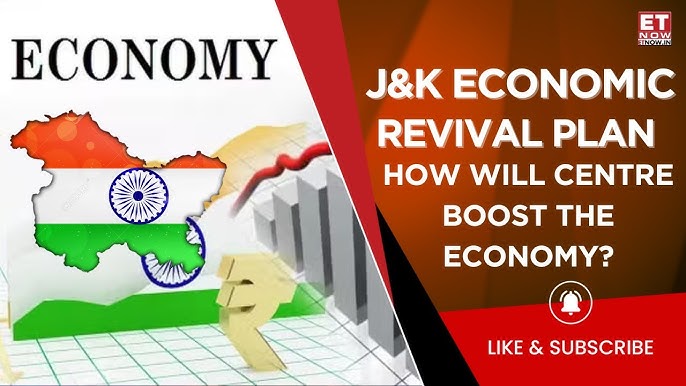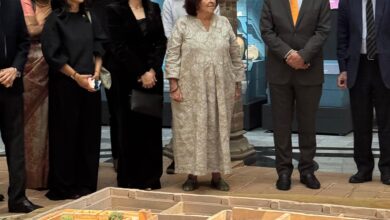Jammu & Kashmir undergoing dynamic economic resurgence
Post-COVID growth transforms industry, infrastructure, and social sectors

In the aftermath of the COVID-19 pandemic, the Union Territory of Jammu & Kashmir (J&K) is undergoing a dynamic economic transformation, marked by strong gains in manufacturing, infrastructure, tourism, and social development.
From FY 2021–22 to FY 2024–25, the region has moved from a pre-pandemic period of structural stagnation to a vibrant growth phase driven by private investment, policy reforms, and grassroots entrepreneurship.
The Gross State Domestic Product (GSDP) at current prices rose from ₹1.67 lakh crore in 2021–22 to ₹2.45 lakh crore in 2023–24, with projections of ₹2.65 lakh crore for 2024–25—more than doubling from ₹1 lakh crore in 2014–15.
J&K’s economy has shown notable resilience post-COVID. The GSDP at constant prices grew at an average annual rate of 5% between FY22 and FY24, compared to 4% in the pre-COVID years. At current prices, annual growth increased to 10%, up from 9%.
Per capita income also rose, averaging 9% growth post-COVID versus 8% pre-pandemic. Inflation remained stable, with Consumer Price Index (CPI) inflation averaging between 4.4% and 4.8%.
| S. No | Economic Indicators | Pre-covid Performance (FY2018-FY2021 average)
% change |
Post-Covid Performance (FY2022-FY2024 average )
% Change |
| 1 | GSDP Constant | 4.0 | 5.0 |
| 2 | GSDP Current | 9.0 | 10.0 |
| 3 | CPI | 5.4 | 5.8 |
| 4 | Per capita income | 8.0 | 9.0 |
| 5 | Agriculture | 5.7 | 7.4 |
| 6 | Manufacturing | 0.4 | 6.6 |
| 7 | Construction | 9.5 | 8.5 |
| 8 | Industry | 4.2 | 7.3 |
| 9 | Banking & Insurance | 4.6 | 10.5 |
| 10 | Services | 11.0 | 10.4 |
Growth of Economic Fundamentals in J&K : Pre and Post Covid Scenario
Agriculture grew from 5.7% pre-COVID to 7.3% post-COVID, supported by increased productivity, improved market access, and targeted government schemes promoting horticulture, floriculture, and organic farming.
Manufacturing, once stagnant with 0.4% growth, surged to 6.6% post-COVID. This dramatic improvement is attributed to the New Industrial Development Scheme (NIDS), streamlined regulatory processes, and incentives for startups and small industries.
The construction sector posted steady growth at 8.5%, slightly below the pre-COVID average but reflective of continued infrastructure investment. Overall industrial growth rose to 7.3%, up from 4.2% earlier.
Banking and insurance services witnessed explosive growth at 10.5%, fueled by expanded credit access, digital financial services, and financial inclusion initiatives.
The services sector maintained solid momentum, growing at 10.4% in the post-COVID phase, bolstered by IT, hospitality, retail, education, and governance services.
J&K’s economic transformation is closely tied to job creation and industrial expansion. Projects worth over ₹45,000 crore are either completed or underway. A recent job fair attracted 57 prominent companies and over 3,750 youth participants.
Under NIDS, ₹28,400 crore worth of incentives have already been utilized, with ₹25,000 crore in active investment proposals—₹10,000 crore operational and ₹15,000 crore in the pipeline. An additional ₹60,000 crore worth of proposals are under evaluation.
Government initiatives are driving inclusive growth and self-reliance:
- PMEGP and REGP provide financial support and seed capital for startups.
- Hausla, Tejaswini, and Mumkin focus on empowering women and youth through skill development, incubation, and market access.
- Mission Youth integrates mentoring, training, and employment support, serving as a comprehensive platform for youth empowerment.
- These programs are now delivering measurable outcomes across the Union Territory.
Massive investments in transport and connectivity are reshaping the region’s economic landscape:
- PMGSY and allied schemes are connecting rural areas and boosting trade.
- Jammu and Srinagar Ring Roads improve logistics and reduce congestion.
- The Udhampur–Srinagar–Baramulla Rail Link (USBRL) nears completion, with the Chenab Bridge—the world’s highest railway bridge—symbolizing engineering excellence.
- Airport upgrades in Srinagar and Jammu have improved passenger handling, with Srinagar Airport exceeding 5 million passengers annually.
Tourism — central to J&K’s economy — has seen a record revival post-pandemic:
- Tourist arrivals rose from 1.1 crore in 2021–22 to over 2.1 crore in 2023–24.
- Events like the G20 summit in Srinagar and winter festivals in Gulmarg have drawn global attention.
- Resurgence of film shoots is revitalizing the cultural economy and generating jobs.
- Tourism has also boosted handicrafts, transport, homestays, and local cuisine—contributing significantly to livelihoods.
- Expansion of medical colleges, hospitals, and telemedicine has improved healthcare accessibility. Ayushman Bharat coverage is widening across remote areas.
The implementation of NEP 2020 is driving curriculum modernization, smart classrooms, and skill-based education. The Gross Enrolment Ratio (GER) has risen, especially for girls, while rural schools benefit from enhanced digital infrastructure.
Programs like Tejaswini and Hausla are enabling thousands of women to become entrepreneurs and leaders through Self-Help Groups (SHGs), financial inclusion, and training.
Jammu & Kashmir is poised for a sustained economic rise. With robust post-COVID growth across key sectors, strong policy frameworks, and infrastructure upgrades, the region is emerging as a strategic economic hub in northern India.
Future growth will depend on deepening skill development, enhancing digital access, and encouraging innovation. With the right momentum, J&K can serve as a national model for inclusive, sustainable development—balancing economic expansion with social equity and regional integration.












